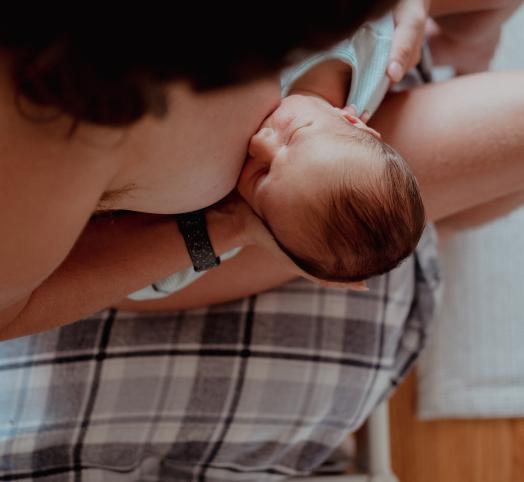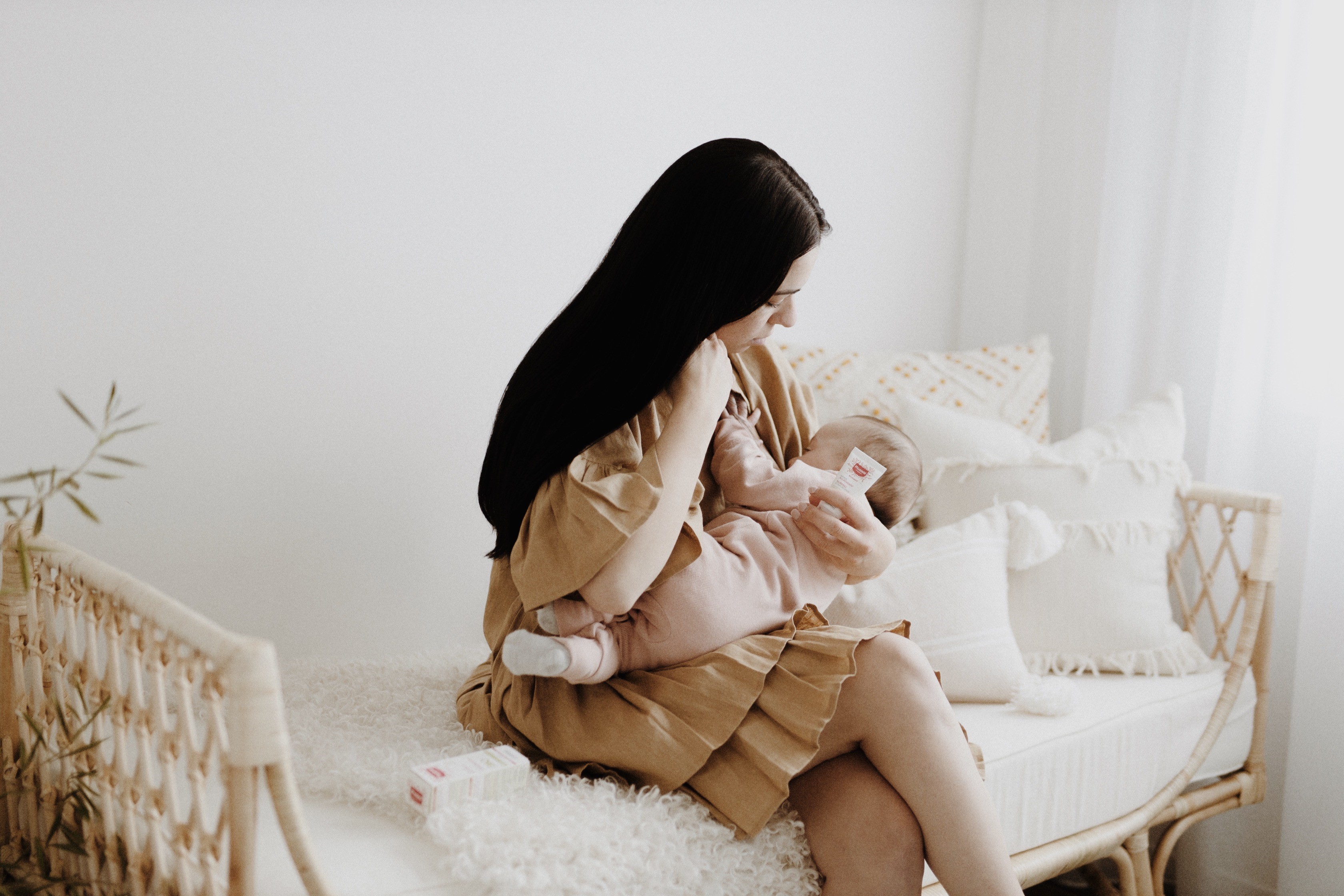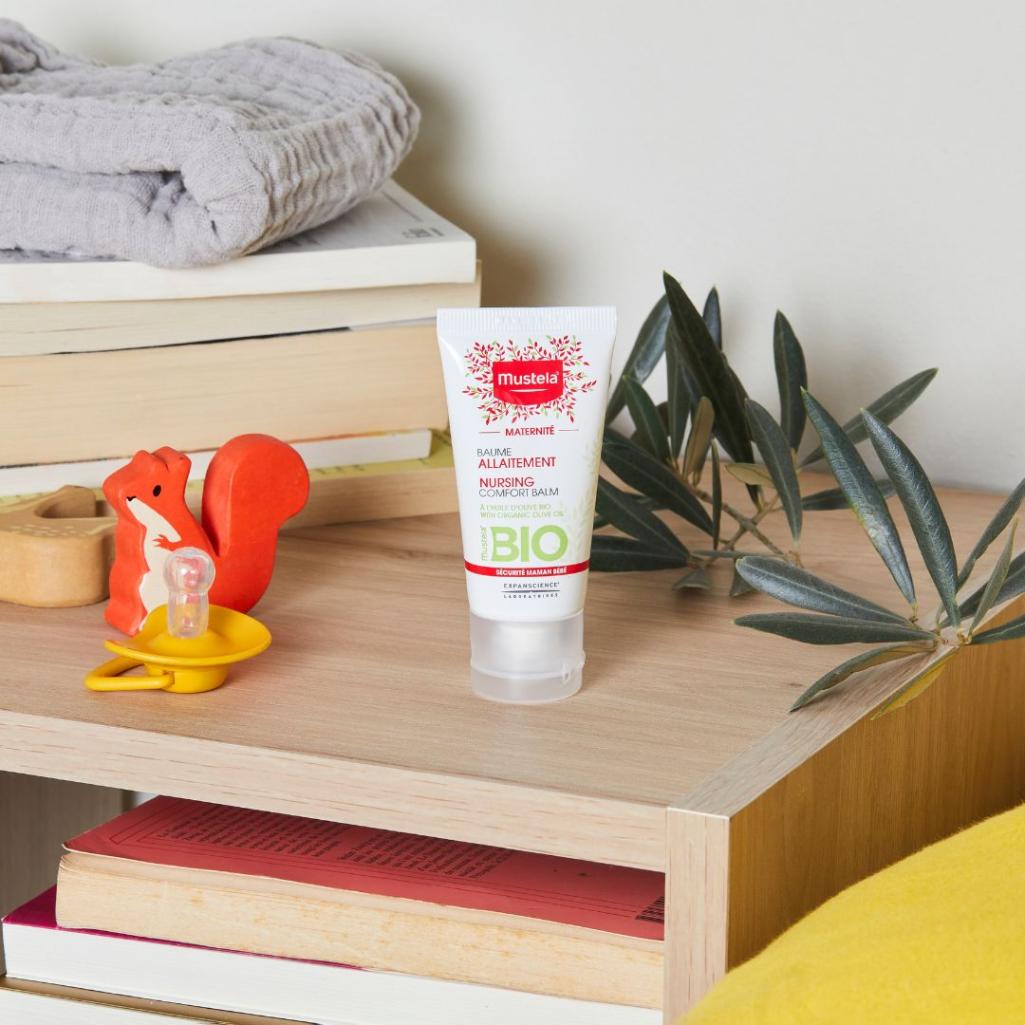Breastfeeding and sore nipples: how to say goodbye to the pain?
Updated on January 31, 2024
Created on July 15, 2022
AU & NZ - Find your nearest pharmacy here
Updated on January 31, 2024
Created on July 15, 2022

Here are some common causes of sore nipples when breastfeeding:
Your nipples are adjusting: during the first few weeks of breastfeeding, as your breasts and nipples get used to the act of feeding, it's normal to experience nipple soreness. However, once you and your baby have established a regular feeding schedule, the discomfort should go away.
An improper latch: if your baby isn't latching on properly to your nipple while you're breastfeeding, you may experience discomfort from friction when your baby's mouth rubs against your skin.
Milk blisters: this is a painful white area on or around the nipple. It is either milk that has thickened or skin that has grown into a milk duct and blocked it, causing a milk blister.
A blister: unlike a milk blister, a friction blister can be caused by things like a bad latch, an uncomfortable nipple shield or a breast pump that rubs against your skin.
Tongue-tie: if your baby's tongue does not stick out past his or her lower lip when crying, or if the tongue looks heart-shaped, this may be because the frenulum (tongue-tie) is short. Nipple soreness can be caused by a short or constricted frenulum preventing proper latching.
Flat or inverted nipples: if your nipple doesn't gently harden and become erect when you apply pressure to the areola (the dark area around your nipple) about an inch behind the nipple, you may have what is known as an inverted nipple. Your nipple is considered inverted if you do the "pinch test" and it retracts. Nipple pain can be caused by poor latching during breastfeeding, which can happen with flat or inverted nipples.
Failure to release the suction before removing the baby from the breast. As well as being painful, this can damage your nipple and breast tissue.
Bras that are too tight: this can put pressure on your nipple and irritate it.
Soaps or perfumes: these can dry out your nipples and cause irritation and pain. Detergents can contribute to this.
Vasospasm: some women experience pain from the nipple to the breast after breastfeeding. This may be caused by vasospasm, a narrowing of the blood vessels in the breast.
Mastitis: if milk cannot flow properly from your breasts because of a blocked milk duct, you may develop this type of breast infection. Your breasts and nipples will become sore and swollen as milk accumulates. Red streaks on your breasts, flu-like symptoms such as fever and body aches, and a firm lump in the breast are other signs.
Thrush infection: is a contagious yeast infection that can infect your nipples and cause soreness. Babies may have thrush if they have white or yellow patches anywhere in their mouth or on their lips, or if they have broken skin at the corners of their mouth. Cracked nipples, shooting sensations in your breast during or after breastfeeding, itchy or burning nipples, and unusually red nipples that are shiny or scaly are some signs of thrush that you may notice in yourself.
Even if your nipples are sore, try to stick to your regular breastfeeding schedule as much as possible, unless your doctor tells you not to. Your milk production may decrease if you stop breastfeeding.
Use a breastpump as a substitute, if it is less painful for your nipples, until the soreness goes away.
You should continue to breastfeed even if you have a breast infection such as mastitis. In fact, if you stop breastfeeding or using a pump, your mastitis-related sore breasts and nipples could get worse. Similarly, unless your doctor tells you otherwise, it is better to continue breastfeeding if your baby has thrush.
Sometimes breastfeeding is associated with minor discomfort. Anticipating this can help you avoid unnecessary worry and know how to respond so that you'll both enjoy breastfeeding.

To treat nipple pain effectively, you need to treat the underlying cause. Always follow your healthcare professional's advice, but in the meantime you may want to try some of these for relief:

Use nipple cream or gel pads. Our Organic Nursing Comfort Balm helps to soothe and restore the skin to make breastfeeding more comfortable. It protects sensitive nipples, soothes and helps restore the skin so new mums can enjoy breastfeeding to the full.
*Use test carried out under dermatological control on 33 breastfeeding women aged 18 to 39, during 21 days (self-assessment by all mums).